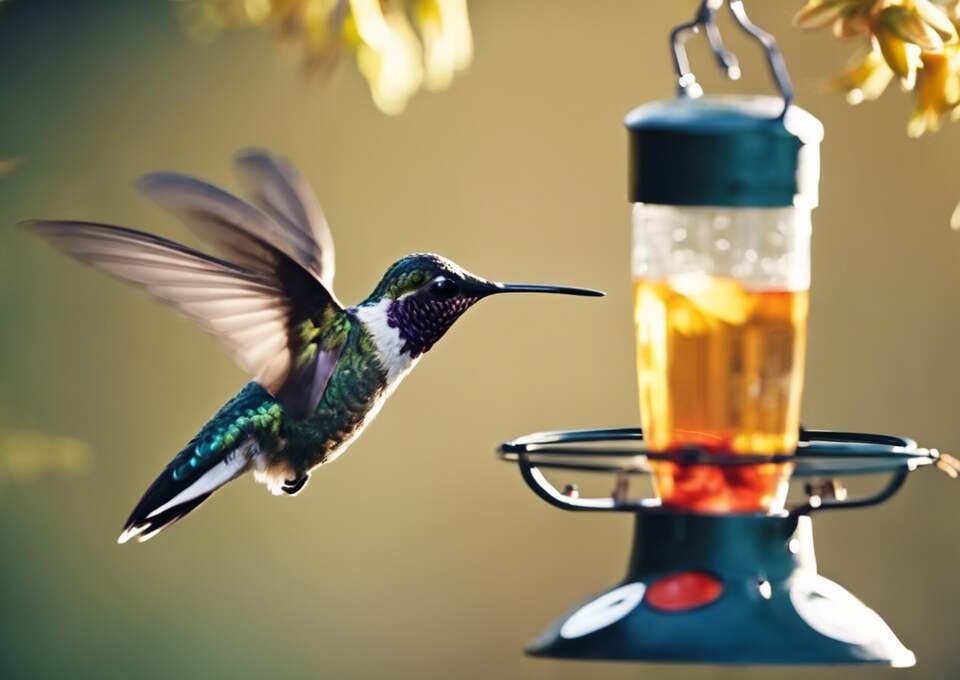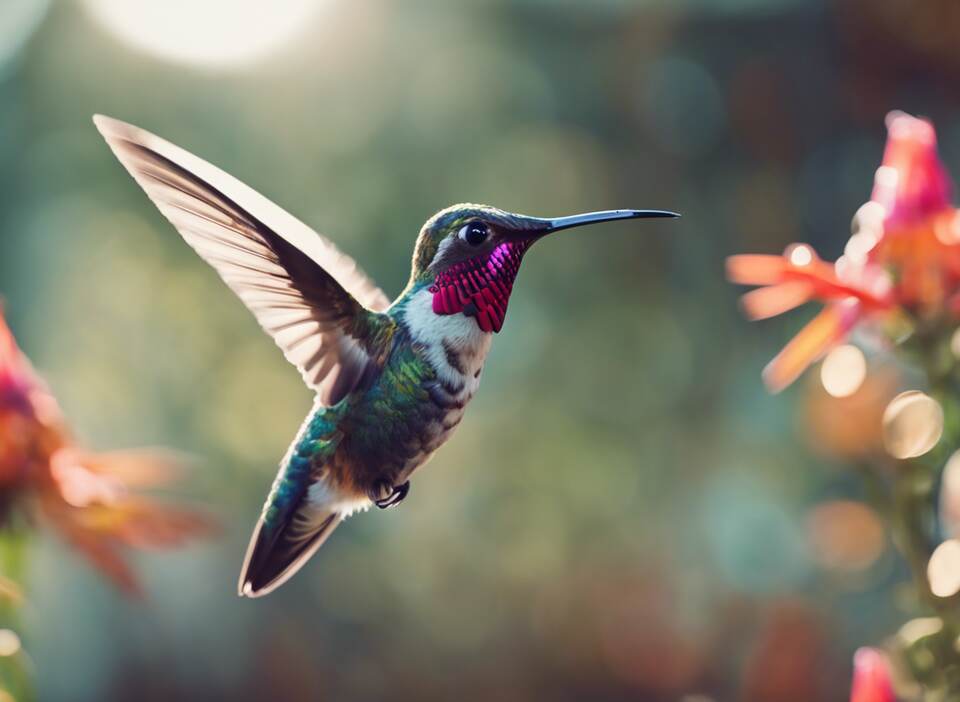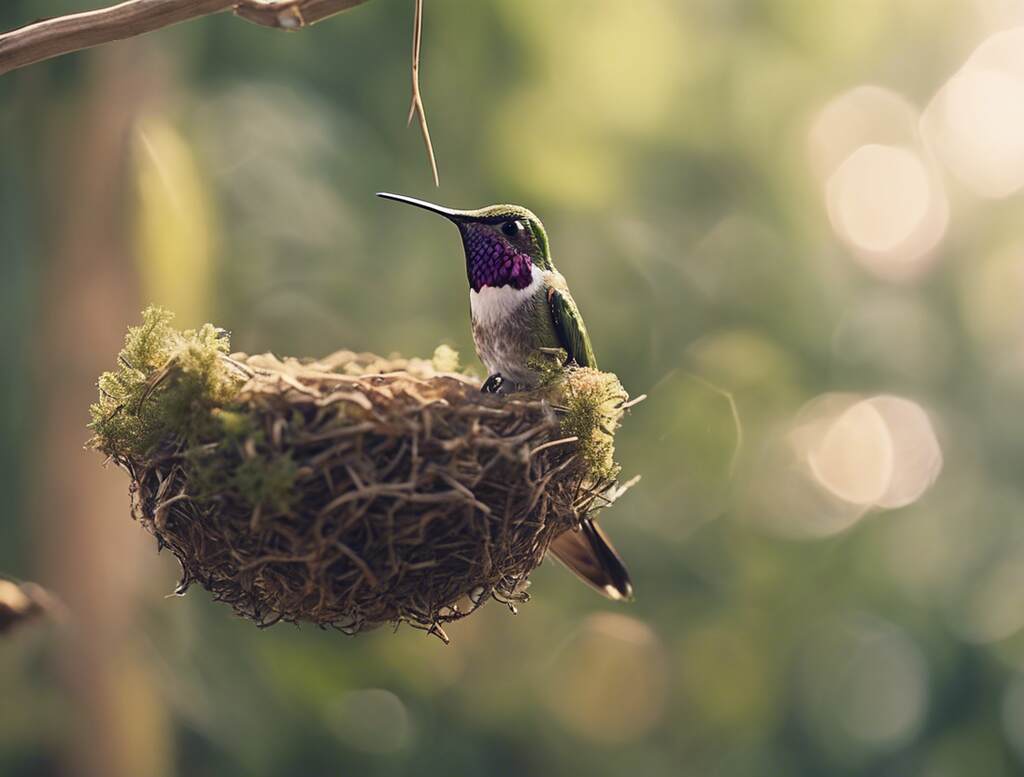If you’ve ever watched a hummingbird flit around your garden, you might have wondered where these tiny, vibrant creatures go when they’re ready to rest or raise their young. Hummingbirds are fascinating, not just because of their dazzling colors and rapid movements, but also because of their unique nesting habits. In this guide, we’ll explore where hummingbirds build their nests, how they choose their locations, and what makes their nesting sites so special. Let’s take a closer look at the hidden world of hummingbird homes!
Click the Play button below to listen to our podcast:
Table of Contents
Where Do Hummingbirds Nest?
Hummingbirds typically choose locations that offer protection and safety for their nests. Common nesting sites include the branches of trees, shrubs, and vines. They often select spots that are well-hidden and inaccessible to predators, such as concealed within dense foliage or at the tips of branches. The availability of suitable nesting sites may vary depending on the species of hummingbird and the local habitat characteristics.
Key Factors Influencing Hummingbird Nesting Locations
Habitat Diversity and Availability
Hummingbirds are highly adaptable birds that can be found in a wide range of habitats, from forests to meadows, deserts to mountains. When it comes to nesting, they look for places with an abundance of flowers for nectar, insects for protein, and suitable materials for nest construction. The availability of diverse habitats ensures that hummingbirds have options to choose the best nesting location based on their needs and preferences.
Shelter and Protection
Hummingbirds are meticulous about selecting a safe and secure nesting site to protect their eggs and chicks from predators and harsh weather conditions. They often choose locations that provide natural shelter, such as dense shrubs, tree branches, or overhanging ledges. The proximity to food sources also influences their decision, as it reduces the energy spent on foraging while nesting.
Nest Structure and Materials
Hummingbirds are known for their intricate nests, which are often camouflaged with lichens, moss, and even bark to blend in with their surroundings. The structural integrity of the nest is essential to support the weight of the eggs and growing chicks. Soft and insulating materials like plant down, spider webs, and feathers are carefully woven together to create a cozy interior for the eggs.
Temperature and Climate
The nesting location of hummingbirds is also influenced by temperature and climate conditions. Hummingbirds are sensitive to extreme temperatures, so they avoid nesting in areas that are too hot or too cold. They often choose sites that offer shade during the hot summer months and protection from strong winds and rain. The microclimate of the nesting area plays a crucial role in providing a comfortable environment for incubating eggs and raising young chicks.
Social Interactions and Competition
In some hummingbird species, social interactions and competition for resources can also affect nesting locations. Dominant individuals may have access to prime nesting sites with abundant food sources, while subordinate birds may have to settle for less optimal locations. Understanding the social dynamics within hummingbird populations can provide insights into why certain nesting areas are preferred over others.
Human Impact and Conservation Efforts
As human activities continue to encroach on natural habitats, hummingbirds face challenges in finding suitable nesting locations. Habitat loss, pesticide use, and climate change threaten the availability of resources essential for their survival. Conservation efforts focused on preserving diverse habitats, planting native flowers, and reducing pesticide use can help create a hospitable environment for hummingbirds to nest and thrive.
The choice of nesting location for hummingbirds is influenced by a combination of factors, including habitat diversity, shelter, nest structure, climate conditions, social interactions, and human impact. By understanding these key factors, we can appreciate the complexity of hummingbird nesting behavior and work towards ensuring a sustainable future for these remarkable birds.

The Role of Habitat Diversity in Hummingbird Nest Selection
Hummingbirds are fascinating creatures known for their vibrant colors and remarkable flying abilities. These tiny birds are not only a delight to watch but also exhibit interesting nesting behaviors. Understanding where hummingbirds choose to build their nests can provide valuable insights into the role of habitat diversity in their nesting selection process.
Importance of Habitat Diversity
Habitat diversity plays a crucial role in the nesting behavior of hummingbirds. These birds seek out a variety of habitats to build their nests, depending on factors such as food availability, shelter, and safety. A diverse habitat provides hummingbirds with a range of resources to support their nesting activities, ensuring the survival of both the adults and their offspring.
Nesting Preferences
Hummingbirds are known to nest in diverse locations, ranging from tree branches to shrubs, and sometimes even using man-made structures such as hanging planters or wires. They prefer locations that provide shelter from predators and environmental elements while also being in close proximity to a good source of food. Hummingbirds are highly adaptable and can nest in both natural and human-altered environments.
Nest Construction
Hummingbirds build their nests using a combination of plant material, such as moss, leaves, and spider silk. These materials are woven together to create a secure structure that can expand as the chicks grow. The female hummingbird is primarily responsible for building the nest, using her beak to shape the materials into a cup-like structure. The nest is carefully camouflaged to blend in with its surroundings, providing additional protection for the eggs and chicks.
Role of Environmental Factors
Environmental factors, such as temperature, rainfall, and vegetation density, can also influence hummingbird nest selection. Hummingbirds seek out locations that offer optimal conditions for incubating their eggs and raising their young. By selecting nesting sites that provide the right balance of food resources and protection, hummingbirds increase the chances of successfully raising their offspring to maturity.
Conservation Implications
Understanding the nesting preferences of hummingbirds and the importance of habitat diversity can have significant conservation implications. By preserving and restoring diverse habitats, we can support healthy hummingbird populations and ensure the continued existence of these remarkable birds. Conservation efforts that focus on maintaining a variety of nesting sites and food sources can help mitigate the impacts of habitat loss and climate change on hummingbird populations.
The selection of nesting sites by hummingbirds is influenced by a combination of factors, including habitat diversity, food availability, and environmental conditions. By studying where hummingbirds choose to nest and the reasons behind their nesting preferences, we can gain valuable insights into how to support and protect these unique birds in the wild.

Conclusion
Hummingbirds, with their tiny yet magnificent presence, contribute significantly to the ecosystem by pollinating flowers and adding beauty to our surroundings. Understanding the key factors that influence their nesting locations and the pivotal role of habitat diversity in their nest selection sheds light on how we can support these delicate creatures to thrive in our environments.
Key Factors Influencing Hummingbird Nesting Locations
Hummingbirds are highly selective when it comes to choosing their nesting locations. Factors such as protection from predators, availability of food sources, and proximity to water play crucial roles in their decision-making process. By understanding these key factors, we can create environments that are more attractive to hummingbirds and conducive to their nesting habits.
The Role of Habitat Diversity in Hummingbird Nest Selection
Habitat diversity plays a vital role in hummingbird nest selection. Hummingbirds are drawn to areas that offer a variety of plants and flowers, providing them with a diverse range of nectar sources. Additionally, having a mix of tree species and open spaces allows hummingbirds to build their nests in locations that are both secure and easily accessible. By promoting habitat diversity in our gardens and green spaces, we can encourage hummingbirds to nest in our surroundings.
By incorporating these key factors into our conservation and landscaping efforts, we can create environments that are not only attractive to hummingbirds but also supportive of their nesting needs. As we strive to coexist harmoniously with these remarkable creatures, let us continue to educate ourselves on the importance of preserving their habitats and ensuring that they have a safe and thriving environment in which to raise their young.
The nesting locations of hummingbirds are influenced by a delicate balance of factors that cater to their specific needs and preferences. By prioritizing habitat diversity and understanding the key elements that guide their nesting habits, we can work towards creating environments that foster the well-being and sustainability of these enchanting birds in our midst.
Let us embrace our role as stewards of the natural world and cultivate spaces that welcome the delicate hum of hummingbird wings as they grace us with their presence and beauty.


